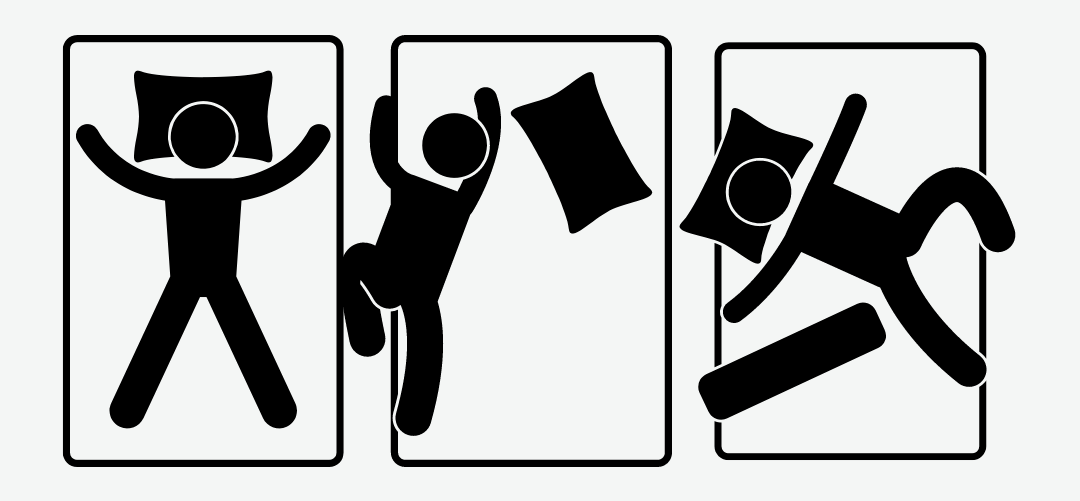
The Sleeping Postures That Show Your Body Is in "Stress Mode"
We’ve all been there: tossing and turning, trying to find the perfect sleeping position while the weight of the world (or your to-do list) keeps running through your mind. Believe it or not, the way you sleep can say a lot about your stress levels. Some sleep positions are so common under stress, they deserve funny names! Let’s break down some of these "stress mode" sleeping postures and what they might be telling you about your body.
1. The Mountain Climber
You’re sprawled out on your stomach, one leg up and bent like you’re scaling a mountain in your sleep. Sound familiar? This position might seem comfy, but it’s your body’s way of tensing up—like it’s preparing for a tough climb ahead.
What It Means:
Sleeping face-down with limbs askew could be a sign of built-up tension or stress. Your muscles are trying to relax, but they’re not quite there yet. You might also be struggling with lower back pain or feeling anxious.
2. The Flat Flamingo
Ever wake up with one leg straight out and the other bent, resting in a flamingo-like pose? You’ve mastered the Flat Flamingo. This position screams, "I want to be comfortable, but I’m just not there yet."
What It Means:
Your body is trying to balance between relaxation and control. This could be a sign that your stress levels are affecting your sleep. It’s like your muscles don’t know whether to fully let go or stay on guard.
3. The Fetal Position
Ah, the classic fetal position—curled up tight like a cozy little ball. It might feel comforting, but if you find yourself tucked into this position night after night, your body is signaling something deeper.
What It Means:
The fetal position is a go-to for people under stress. Curling up protects the vital organs, which is a natural response to feeling vulnerable. It’s your body’s way of shielding itself from the emotional and physical tension you’re carrying throughout the day.
4. The Sideways Pretzel
One leg is kicked over, twisting your body into a knot, and you’re wrapped in your blanket like a pretzel. You probably wake up wondering how you got there in the first place.
What It Means:
This twisty posture shows your body is trying to find comfort but can’t quite settle. You’re not fully relaxed, and it might be your mind processing worries or stress, twisting your body into uncomfortable knots along the way.
5. The Starfish
If you’re lying on your back, arms spread wide like you’re making a snow angel, congratulations—you’re in Starfish Mode. But if it’s combined with fidgeting or tension, there’s more at play.
What It Means:
While the starfish is typically a position of openness and comfort, if you’re tense or restless, it could mean you’re overstimulated from stress. Your body is trying to decompress, but it hasn’t fully let go of the day’s pressures.
6. The Sleep Diver
You’re on your stomach, face down, arms tucked under the pillow, ready to dive deep into dreamland—but with a stiff neck and sore shoulders by morning.
What It Means:
This belly-flop pose shows your body is trying to escape stress, but it’s not finding the relief it needs. You might be feeling overwhelmed or anxious, and sleeping face down can be a sign that your mind is in overdrive, diving into your worries.
Why Stress Impacts Your Sleep Posture
Stress affects not only how you feel during the day but also how you sleep at night. When your body is under stress, your muscles may tense up, and your sleep positions might reflect that tension. You might end up in awkward or uncomfortable poses because your body is fighting to relax.
How to Get Out of "Stress Mode" and Into "Relaxation Mode"
The key to avoiding these stress-induced sleep postures is creating a more relaxing sleep environment and improving your sleep posture. That’s where ergonomic solutions, like the Serene Island Body Pillow, come in handy. Designed to support your body’s natural alignment and reduce tension, it helps you escape the mountain climber or fetal position and drift off in comfort.
Pro Tip: Practice relaxation techniques before bed, like deep breathing or gentle stretches, to ease your body out of stress mode and into relaxation mode.
Final Thoughts
Next time you wake up feeling like you’ve been wrestling a bear all night or climbing Everest in your dreams, take a moment to reflect on your sleep posture. Your body might be telling you it’s stressed and needs a little TLC. By recognizing these quirky sleep postures and taking steps to reduce stress, you can give your body the rest it deserves—and maybe even leave behind the "Flat Flamingo" for good!
Sleep well, friends—your body will thank you!
May Good Sleep Be With You.
Sweet Dreams.





